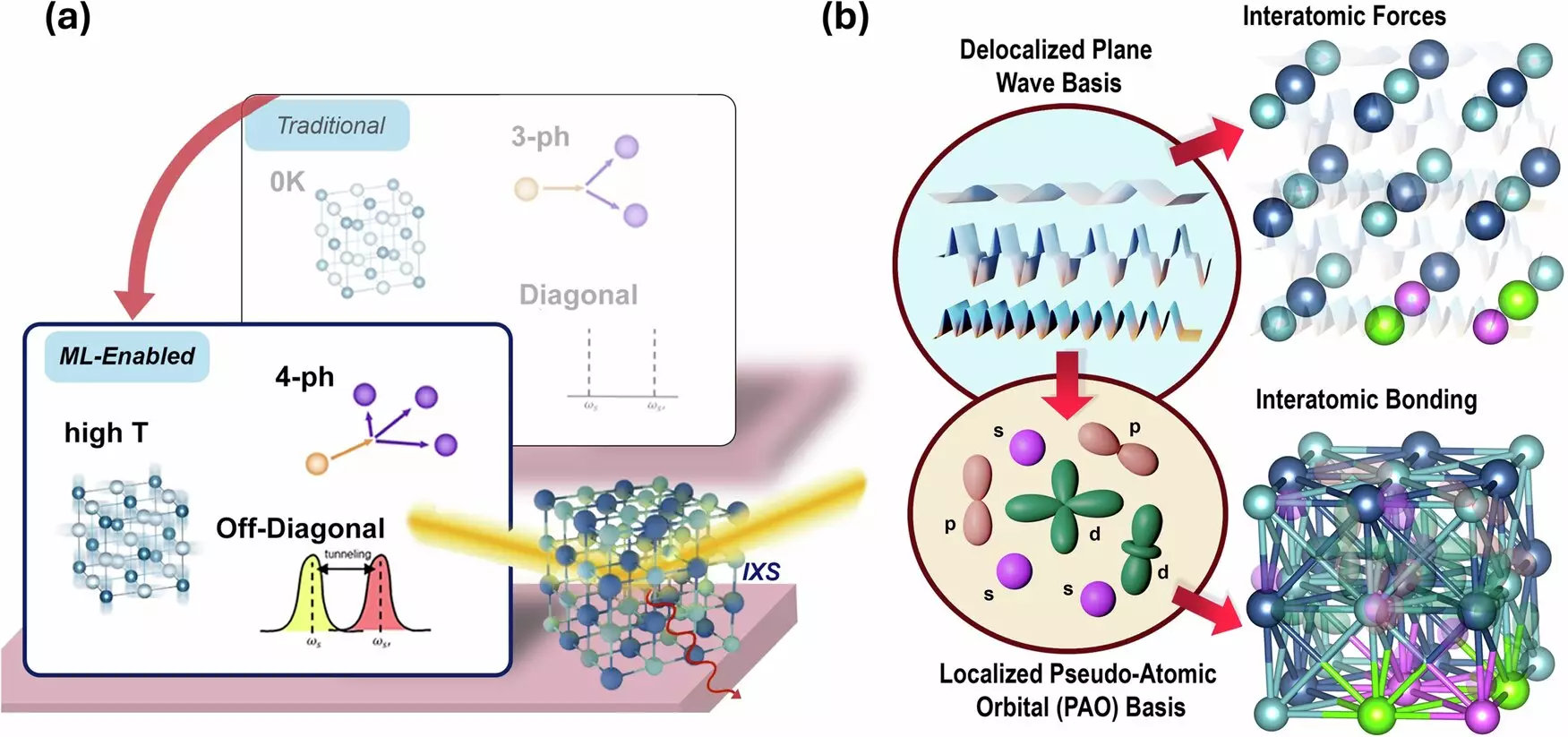Germanium telluride (GeTe) has long fascinated scientists for its properties that make it a promising candidate in the realm of thermoelectric materials. It belongs to a class of substances known as phase-change materials (PCMs), which can alter their physical characteristics based on internal structural transitions. Specifically, GeTe has been observed to exhibit a perplexing increase in its lattice thermal conductivity as temperature rises—a phenomenon that has puzzled researchers for years. While the existence of this odd behavior has been noted, understanding the underlying causes has remained an elusive quest. Recent work by a team at Cornell University, spearheaded by Zhiting Tian of the Sibley School of Mechanical and Aerospace Engineering, sheds light on this phenomenon, revealing key insights into thermal transport mechanisms in these significant materials.
The researchers dug into the nature of GeTe’s transition from a rhombohedral to a cubic crystalline structure as temperatures soar from 693 Kelvin to 850 Kelvin. They discovered that the bonds between second-nearest neighbors—specifically the Ge-Ge and Te-Te atomic connections—undergo substantial enhancements under rising thermal conditions. Ge-Ge bond strength saw an increase of 8.3%, while the strength of Te-Te bonds skyrocketed by an astonishing 103%. These findings point to the idea that strengthening atomic interactions play a substantial role in explaining the unexpected increase in thermal conductivity.
What was particularly groundbreaking was the combination of machine learning techniques with advanced experimental techniques such as X-ray scattering. This merger of computational and empirical methods allowed researchers to successfully model the trends associated with thermal conductivity with unprecedented precision. Tian aptly noted that exploring temperature effects and related complex scattering interactions is computationally challenging; however, the application of machine learning streamlined this intricate task, allowing for a comprehensive analysis that considered multiple variables.
Traditionally, material scientists have resorted to extensive experimental methods to validate computational models. However, Tian’s study encapsulates a shift toward more integrated methodologies. By leveraging machine learning, the team ameliorated the computational constraints usually experienced during analyses of such dynamic materials. They effectively utilized statistical techniques common in chemistry to conduct bond strength evaluations, providing an innovative pathway for understanding how various physical factors interact at elevated temperatures.
This approach highlights an emergent paradigm in materials science where computational tools not only replicate existing data but also predict new trends, thereby igniting further exploration into materials with potential applications across various energy sectors.
The significance of these findings transcends GeTe itself. This research is part of a broader inquiry into phase-change materials, which are recognized for their tunable optical and electrical properties based on structural phase changes. The implications of this work are particularly salient in discussions regarding thermoelectric materials that could replace lead telluride due to the latter’s toxic profile. As researchers strive to identify safer and more efficient alternatives, GeTe is emerging as a frontrunner.
Furthermore, the discovery that other materials such as tin telluride and tin selenide exhibit similar conductivity trends further broadens the scope of this research. These revelations position the studied materials as robust candidates for enhancing thermoelectric efficiency, leading to advancements in energy conversion technologies that harness waste heat.
The work illuminating the thermal conductivity behavior of GeTe represents a significant leap forward in our comprehension of thermal transport in phase-change materials. Through the innovative integration of machine learning and experimental validation, the research not only elucidates existing mysteries but also sets the stage for future inquiries into other materials. As we navigate the complexities of energy conversion, such advancements may hold the key to unlocking more efficient, sustainable technologies—an imperative goal in an era marked by pressing ecological challenges. The journey into the depths of material behavior continues, with GeTe serving as a beacon for the possibilities that lie ahead.


Leave a Reply